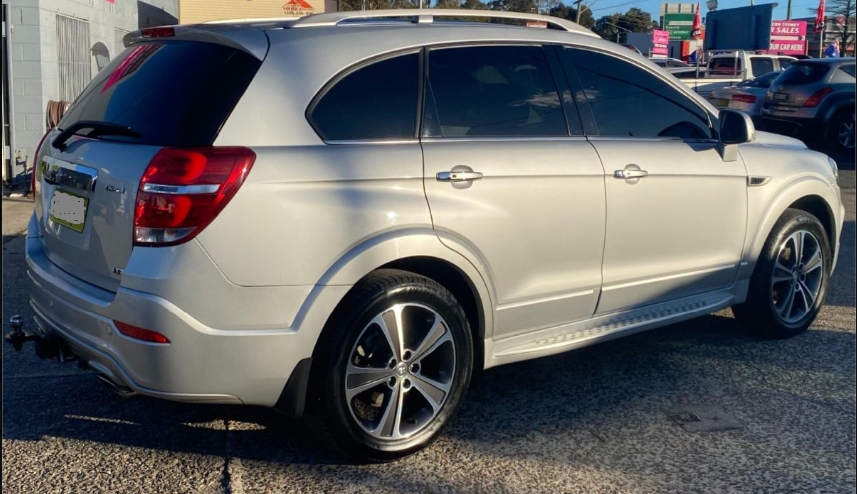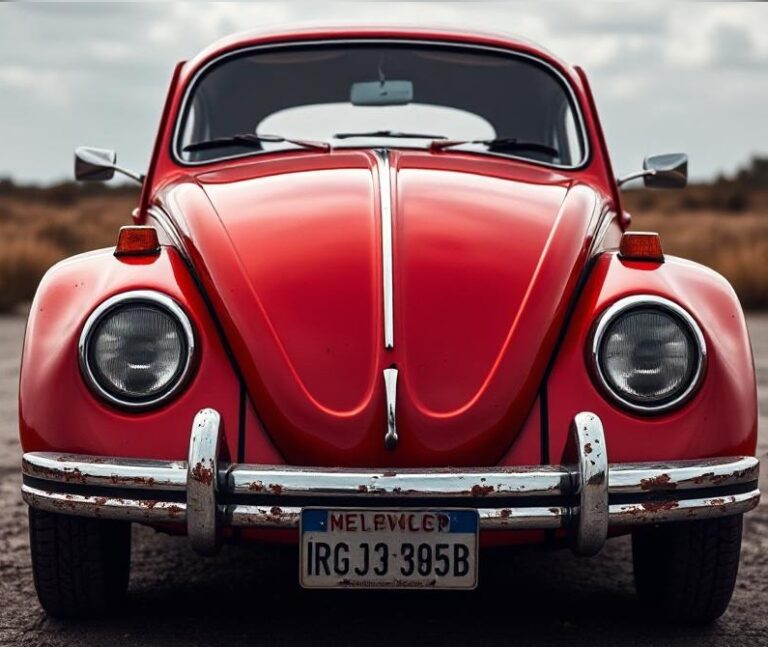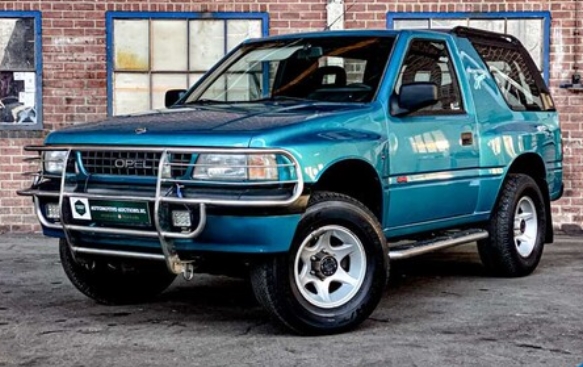The Constant Holden Captiva: Charting the Evolution of a Family SUV
In the landscape of Australian motoring, few vehicles evoke as complex a legacy as the Holden Captiva. For over a decade, it was a ubiquitous presence on suburban streets, school runs, and holiday road trips. A commercial juggernaut for Holden, it perfectly captured the market’s seismic shift towards family-friendly SUVs. Yet, it also carried a reputation that was as polarizing as its sales figures were impressive. To understand the Captiva is to understand a pivotal era for Holden—one defined by globalization, platform sharing, and a relentless pursuit of the volume-selling family market. This is the story of its evolution, from its ambitious launch to its final, quiet departure.
The Genesis: The CG Captiva (2006–2009)
By the mid-2000s, Holden’s SUV lineup was aging. The Isuzu-derived Frontera and Jackaroo were traditional, truck-based 4x4s in a market that was rapidly embracing more comfortable, car-like “soft-roaders.” Holden needed a modern competitor for the Ford Territory and Toyota Kluger, and it needed one fast. The solution came from General Motors’ global portfolio, specifically from its recently acquired South Korean subsidiary, Daewoo.
In October 2006, Holden launched the CG Captiva. It was a rebadged Daewoo Winstorm, built on the GM Theta platform, and it arrived with a compelling value proposition. From day one, it offered the choice of five or seven seats, a standard V6 engine, and all-wheel drive—a combination that immediately appealed to growing Australian families.
The initial model lineup was straightforward and structured in Holden’s familiar hierarchy:
- SX: The entry-level model, yet generously equipped for the time. It came standard with seven seats, a 3.2-litre ‘Alloytec’ V6 engine producing 167kW, a five-speed automatic transmission, all-wheel drive (AWD), 17-inch alloy wheels, and crucial safety features like ESC and curtain airbags.
- CX: The mid-range variant added popular features like front fog lamps, climate control, and a sportier interior and exterior trim.
- LX: The range-topper boasted luxury appointments including leather upholstery, a sunroof, 18-inch wheels, and rear parking sensors.
Just months after its debut, in a move to broaden its appeal, Holden introduced a 2.0-litre four-cylinder turbo-diesel engine in March 2007. This 110kW common-rail diesel offered superior fuel economy and substantial torque, making it a popular choice for budget-conscious and long-distance drivers across the SX, CX, and LX trims.
Concurrent to the main seven-seat range, Holden also launched the Captiva MaXX in late 2006. This was a different vehicle, a rebadged version of the European-designed Opel Antara. It was a sportier, five-seat-only model with more dynamic styling, a firmer suspension tune, and a distinct interior. Sold only in a single high-spec level, it shared the same 3.2-litre V6 and AWD system as its larger sibling but was aimed at a different, more style-focused buyer. This dual-model strategy, selling two distinct vehicles under one nameplate, would become a confusing but defining feature of the Captiva’s tenure.
.

.
The First Refinement: Diversification (2009–2011)
In 2009, the Captiva received its first significant update. While visual changes were minor, the mechanical and structural changes were crucial for expanding its market share. Responding to rising fuel prices and buyer demand for more affordable options, Holden introduced two key powertrain variants.
For the first time, the base SX model was offered with a 2.4-litre four-cylinder petrol engine. More importantly, this entry-level engine was paired exclusively with a front-wheel drive (FWD) layout. This move lowered the Captiva’s entry price significantly, putting it in direct competition with smaller, cheaper SUVs and making it accessible to a wider audience. The V6 and diesel options remained available with AWD.
During this period, the sporty but slow-selling Captiva MaXX was quietly discontinued in 2008, simplifying the range temporarily before its platform would make a significant return.
The Series II Overhaul: A New Face and a Formal Split (2011–2015)
The most dramatic transformation in the Captiva’s history arrived in early 2011 with the launch of the “Series II.” This was a major facelift that brought a bold, aggressive new front end dominated by a large, dual-port grille, bringing its styling in line with other contemporary Holden models. The changes, however, were far more than skin deep.
This update formalized the two-vehicle strategy. The range was now officially split into two distinct models:
- Holden Captiva 7: The original, larger seven-seat model.
- Holden Captiva 5: The return of the shorter-wheelbase, five-seat Opel Antara-based model, now fully integrated into the main lineup as the entry point.
The engine and transmission lineup was almost completely overhauled, marking a significant leap in technology and efficiency.
For the Captiva 7:
- A new 2.4-litre DOHC four-cylinder petrol engine became the new entry point for the FWD SX model.
- The old 3.2-litre Alloytec V6 was replaced by GM’s more modern 3.0-litre SIDI (Spark Ignition Direct Injection) V6, a detuned version of the engine found in the VE Series II Commodore. It was more powerful (190kW) and more efficient. This engine was paired exclusively with AWD.
- The diesel engine was upgraded to a more potent 2.2-litre unit, producing 135kW and a hefty 400Nm of torque. Critically, this diesel was now available in both FWD and AWD configurations.
- A new six-speed automatic transmission became standard across the range.
The trim levels for the Captiva 7 were:
- SX: Available with the 2.4L petrol FWD or 2.2L diesel FWD/AWD.
- CX: Offered with the 3.0L V6 AWD or 2.2L diesel AWD.
- LX: The top-spec model, also available with the 3.0L V6 AWD or 2.2L diesel AWD.
For the Captiva 5: This revived five-seater offered a simpler lineup aimed at value and urban practicality.
- A base FWD model was powered by the 2.4-litre petrol engine, available with either a manual or automatic transmission.
- A higher-spec AWD model was available exclusively with the 2.2-litre turbo-diesel engine and an automatic transmission.
This comprehensive update revitalized the Captiva, giving it a modern powertrain portfolio and a clear two-pronged attack on the medium SUV market. Sales surged, cementing its place as one of Australia’s favorite family wagons.
The Final Iterations: Simplification and Technology (2016–2018)
By 2016, the Captiva platform was a decade old—an eternity in the fast-moving automotive world. To keep it competitive against newer rivals like the Mazda CX-5 and Hyundai Santa Fe, Holden gave it one final major facelift.
The most noticeable change was another redesigned front end, featuring a new grille and headlight design that aligned it with Holden’s latest passenger car range. Inside, the dashboard was significantly updated with a modern centre stack designed to house a 7-inch touchscreen infotainment system. This was the headline upgrade, bringing with it Apple CarPlay and Android Auto connectivity, a feature that was essential for staying relevant with tech-savvy buyers.
With this update, Holden also attempted to simplify the confusing branding. The “Captiva 5” and “Captiva 7” names were officially dropped. The range was now known simply as the Holden Captiva. However, the two different body styles (the short-wheelbase five-seater and the long-wheelbase seven-seater) remained, now differentiated purely by trim level.
The new trim structure was:
- LS: The new base model. This was available as a five-seat FWD with the 2.4L petrol engine (the old Captiva 5 body) or as a seven-seat FWD with the same engine. A seven-seat diesel AWD version was also available.
- LT: A new mid-spec, seven-seat-only model, offered exclusively in AWD with the 2.2L turbo-diesel.
- LTZ: The flagship model remained, available as a seven-seater with either the 3.0L V6 AWD or the 2.2L diesel AWD. It came fully loaded with 19-inch wheels, leather trim, and advanced safety features.
This final iteration represented the Captiva’s peak in terms of technology and value. It was more connected and better equipped than ever, and sharp pricing kept it flying out of showrooms even as its underpinnings aged.
End of the Road and a Complex Legacy
In late 2017, with the closure of Holden’s local manufacturing and the brand’s transition to a full-line importer, the Captiva’s fate was sealed. Holden announced a completely revamped SUV strategy based on newer, more sophisticated American-sourced GM products. The five-seat Holden Equinox would replace the role of the smaller Captiva, while the large, seven-seat Acadia would serve as the new family flagship. The last Holden Captivas were sold in 2018, bringing its impressive 12-year run to an end.
The Holden Captiva’s legacy is undeniably complex. Commercially, it was a resounding success, consistently ranking among Australia’s best-selling SUVs and providing thousands of families with affordable, practical, and well-equipped transport. It was a masterstroke of product planning and marketing, perfectly timed to ride the SUV wave.
However, its reputation among enthusiasts and in the used-car market was marred by widely reported reliability issues, particularly concerning timing chains on early V6 models, diesel particulate filter (DPF) problems, and transmission woes. This led to the unfortunate but sticky “Craptiva” moniker, a nickname that belied its immense popularity with everyday buyers.
Ultimately, the Holden Captiva was a vehicle of its time: a global platform adapted for Australian needs, a triumph of value over virtue. It was a constant in the Holden lineup through a period of immense change, a dependable workhorse for a generation of families. While it may not be remembered for its driving dynamics or flawless reliability, its story is a crucial chapter in the history of the Australian family car.







